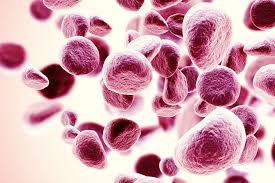Article
A Beginner’s Guide to Understanding Myeloma
Author(s):
In an interview with CURE®, Dr. Giada Bianchi provides patients an overview of myeloma, including symptoms and risk factors of the disease people should look out for.
The last 15 years have proved pivotal for patients with myeloma, as the Food and Drug Administration (FDA) has approved many active and highly specific therapies to treat the disease, according to Dr. Giada Bianchi.
Bianchi, who is an associate director of the Amyloidosis Program at Brigham and Women’s Hospital and Dana-Farber Cancer Institute, recently provided an overview of myeloma during CURE®’s virtual Educated Patient® Multiple Myeloma Summit.
In an interview with CURE®, Bianchi explained what myeloma is, and discussed what therapies are currently available to treat the disease and how patients can work with physicians to select the best therapy.
CURE®: How do you explain to patients what myeloma is and how it usually develops?
Bianchi: I'm a big fan of drawing. So usually, when I meet with my patients, I do this very rudimental drawing of what a plasma cell is, and how a normal plasma cell helps us by producing antibodies and in fighting infection on our behalf.
And from there, I take it to the fact that myeloma is a cancer of plasma cells and retain much of the capacity of normal plasma cells to secrete an abnormal protein or an abnormal immunoglobulin in the blood. And that's often how we detect the disease or, you know, we provide a diagnosis. And then I tell them that these cells typically live in the bone marrow, and when myeloma develops, rather than being a handful of cells in the bone marrow, they really start to grow disproportionately and impair the normal element of the bone marrow. And so, the good cells of the blood, the platelets, the white cells, the red cells, they impact the integrity of the bone. And so typically, patients present with bone pain related to bone disease from the exuberant growth of myeloma cells. Occasionally, the proteins that myeloma cells produce can also hurt the kidneys. Renal failure is another manifestation of this disease, that together with the high calcium level can often lead to the diagnosis.
You mention bone pain, but what are some other symptoms that patients should be aware of?
The initial symptoms of myeloma may be very subtle like fatigue or a lack of stamina. This is often related to a degree of anemia or low hemoglobin in the blood that leads to the sensation of lack of energy. As far as pain, myeloma generally develops in the seventh decade of life, so it's not uncommon to have chronic back pain or bone pain related to degenerative joint disease. But any pain that is severe in nature, and different in quality than what it was before, or unremitting with normal conservative measures. In a patient's that particularly have a history of (monoclonal gammopathy of undetermined significance, or MGUS) — so carries a history of the premalignant condition that (affects) plasma cells should warrant (further) investigation and further imaging to rule out progression from precursor disease to active myeloma.
What are some of the risk factors of myeloma?
Unfortunately, we know very little of how myeloma develops, and there are very limited environmental risk factors that clearly have been associated with the development of myeloma. These limited risk factors are exposure to ionizing radiation. This would include something like Chernobyl-type radiation, as well as exposure to benzene. There is also an association with exposure to Agent Orange. So, for Vietnam veterans, that's certainly a question that needs to be asked. And there is a very slight increased incidence in first-degree relatives of patients that have had multiple myeloma or lymphoproliferative disorder. This increased risk is caused about two times the general population and so remains like relatively small numbers and relatively small risk. And we do not recommend any extra screening for first-degree family members of patients with myeloma. Studies have clearly shown though that multiple myeloma is basically inevitably preceded by precursor conditions. And so a patient that carry a diagnosis of monoclonal gammopathy of undetermined significance, this MGUS condition, or smoldering myeloma really should be monitored routinely, by hematologist/oncologist in terms of laboratory markers and physical examination, to make sure that these precursor (conditions) are actually not developing into an active cancer that will warrant treatment.
What do you usually tell patients regarding the prognosis of myeloma?
Currently, we do not consider multiple myeloma a disease that is curable. We are progressing toward a cure for many patients that have low risk disease and can enjoy a prolonged progression-free survival that often translates into overall survival in impatient in the seventh or eighth decade of life. But, biologically speaking, we don't think that with current therapies, we can eradicate this disease and not have it comeback over a period of 10 or 20 years. What I tell my patients is that though we're getting better and better, and we're continuing to improve and understand the biology of myeloma, and understand the vulnerabilities of the cells, which allow us to come up with better and better therapies that target particular pathways to which myeloma cells are addicted. And so, this is a disease that is very well treatable, and very well manageable and many of our patients can live with myeloma for many years and decades, to an extent like a chronic illness.
What are some currently approved therapies that can be considered for treatment? And how can patients work with their physicians to select the right option?
We've been incredibly lucky in myeloma with the very active, highly specific therapies that have been approved over the course of the past 15 years. We now have a category of anti-myeloma therapies: proteasome inhibitors, so medications that work by clogging the recycle bin of plasma cells, which were shown in the lab is a vulnerability intrinsic in these cells that are so exuberantly producing protein and so avidly need to discard the ones that are not properly made. We have three proteasome inhibitors that are currently FDA approved for the treatment of myeloma. We have three immunomodulatory drugs that are currently FDA approved for multiple myeloma. These are medications that are taken by mouth as pills. They have a direct toxic effect on the cells by altering certain proteins to which myeloma is addicted. But they also elicit an immune response against myeloma cells. And so, they modulate the new microenvironment and help immune surveillance against myeloma. We have had approval of monoclonal antibodies targeting two different proteins that are expressed on the cell surface of myeloma, CD38 with daratumumab (Darzalex), and isatuximab (Sarclisa) (for) SLAMF7 with elotuzumab (Empliciti). These are also very powerful medications where the CD38 antibodies again can directly kill the myeloma cells, but also engage the immune system and chasing down myeloma. We have one HDAC (histone deacetylast) inhibitor that has been approved panobinostat for use in multiple myeloma in combination with bortezomib and dexamethasone, and we think these medications have many different effects. Finally, more recently, we have had approval of selinexor (Xpovio), that's the first selective inhibitor of nuclear export, which have shown very promising results in highly and heavily pretreated patients. And lastly, there's blinatumomab (Blincyto) fidotin. It's now finished here because we hope that in the next few months, hopefully, or maybe few years, we're going to have approval of CAR-T cells in myeloma. We think we're gonna possibly have approval of a derivative from melphalan, called melflufen, for the treatment of myeloma, and the field of clinical trials with phase-one molecules and first-in-human molecules is very busy. So, we expect in the years to come to have even more agents to offer to our patients.
As for the second question, we are in the position that we can discuss a lot of the pros and cons of each category of these drugs and tailor therapy depending on what the primary wishes of the patient are. So, we have the leisure to be able to pick and choose to a certain extent.
Looking ahead a few years from now, what do you envision the outlook of this disease being?
I think our priority now is to understand how to combine these medications together in a rational manner that is supported by laboratory work, and what type of medication to prioritize or choose in patients that have certain features or certain characteristics. I think there is a lot of interest in applying multi-omics approaches where we can look at rearrangements in the DNA and the RNA and in the proteins to try to better understand what therapies are most appropriate for patients and how we can avoid eliciting resistance over time. So, I think this is gonna be a big task moving ahead. And then eventually, you know, the Holy Grail would really be able to understand the fundamental mechanisms that support the transformation of MGUS and smoldering myeloma into active myeloma to try to block the transformation from happening all together, and therefore really cure the disease before it even occurs.
This interview has been edited for clarity and conciseness.




